Indian cuisine has struggled to find its place in Taiwan’s international food scene. Not rare enough to be cast among the “exotic” types that have but a handful of representative restaurants in Taipei (think Peruvian, Russian or even Turkish), nor popular enough to join the mainstream giants (Italian, Thai, Korean), it occupies a culinary no man’s land where most restaurants stick to the predictable Taj Mahal formula to get noticed.
My passion for the condiments of the subcontinent began back in college, cooking with my Indian roommate. Years spent bonding over the rituals of onion chopping and roti tossing, we not only forged a lasting friendship, but also fine-honed a string of curries that have been the talk of countless dinner parties I’ve hosted since. I’m the kind of person who has a list of favorite Indian restaurants, and I’m always looking to add to it.
And so it was with high hopes that my wife and I came to Saathiya (莎堤亞), located on a second floor on Xinyi Road (信義路), just above Dongmen MRT Station (東門). You’d miss it if it weren’t for the orange, green and white menu stand at the bottom of the stairwell. Nothing, (except perhaps the Taj Mahal), says Indian restaurant quite like the country’s trademark tricolor.
.jpg)
Photo: Liam Gibson
We sit by a large window at the far end of the space which overlooks Xinyi Road. Its low-key for a Saturday night. The place is almost empty except for a couple of tables. The walls of the place are lined with abstract paintings of a remarkably consistent style, courtesy of the owner’s friend and long-term Taiwan resident, artist Sagar Telekar. The paintings are aesthetically pleasing, but stand in jarring contrast next to the flat-screen monitor playing an MTV-like stream of Bollywood dance scenes. The seats are Ikea-chic: simple, black and covered with a nice padding that upon second squeeze feels like one of those thick, cushy mouse pads that gamers use.
We are served by a young Mongolian waiter/waitress duo. Neither can speak Chinese, (nor Hindi for that matter), “Only English,” they say. My wife lets me order.
Flavoring a curry’s gravy with methi (fenugreek seed powder) takes experience. Believed to have special medicinal properties, it’s something of an acquired taste, even in India. I’ve ruined plenty of curries crossing the threshold where stimulating acidic bite becomes bittery awfulness. Saathiya’s methi malai paneer (NT$350) past the test. The methi flavor is subtle, but noticeable, just as it should be.
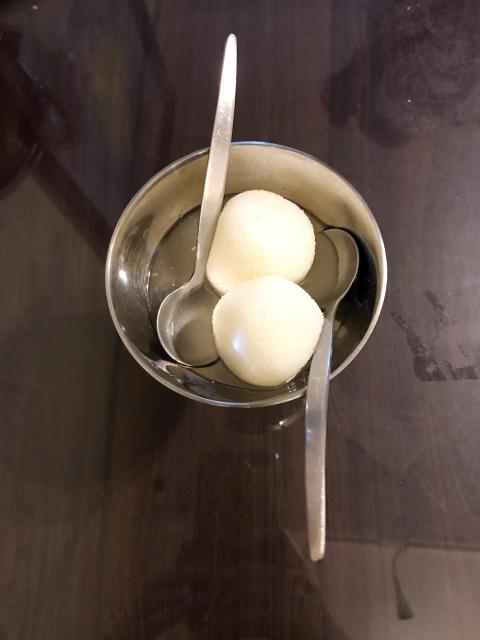
Photo: Liam Gibson
A plain lassi (NT$100) is a must if you’re sampling multiple curries in one sitting. Its tangy/salty sharpness helps bring your palate back to ground zero in a quick neutralizing gulp. This one delivered the palate-purging hit and a satisfying mouthful of yoghurt-milky frothy goodness.
The aloo paratha (NT$125) was a major disappointment. Undercooked, damp, oily and served on ugly pieces of paper towel.
One critical test for any restaurant, but especially so for Indian ones, is whether or not they can tailor the spice level to your specifications. Saathiya needs to work on this. I asked for the Hyderabadi special chicken curry (NT$380) to be very spicy and it was medium, at best. If they can’t get it right using their preferred English, I can’t imagine how they’d fare in Mandarin.
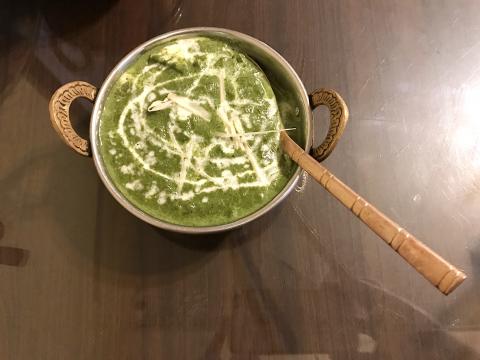
Photo: Liam Gibson
The spinach-based gravy of the palak paneer (NT$320) was smooth, thick and just a little pulpy. Unfortunately, that was all this dish got right. The paneer was sliced into cubic pieces, chewy but bland. Lightly frying paneer with jeera (cumin seeds) really transforms its flavor. But it seems they’d rather skimp on the seeds here, and so its aromatic potential was left unrealized. Inch-sized onion slices were an unpleasant surprise. This faux pas would have been permissible if it were accompanied by other veggies such as bell peppers, (as is usual in dishes like paneer tikka masala), but as it was the only vegetable in the gravy, it was hard to overlook.
For desert, we ordered rasgulla (NT$90) as gulab jamun wasn’t available. Two white balls come soaked in a little pool of syrup. To really relish the heady-sensation it offers, rasgulla, like gulab jamun, should be taken in one bite. One bite of heavenly bliss. The ball’s sponginess resists the weight of your jaws as they slowly clamp down, letting the syrup slowly ooze and flow out over your teeth and tongue. The sponge becomes firmer as you push into the core before finally splitting and filling your cavity with a sugary mouthful of sinful proportions.
I wish the rest of the meal had delivered similar levels of sensory satisfaction, but all in all, it was hit and miss. At just over a year old, Saathiya is a new arrival on Taipei’s indistinct Indian scene, and like a toddler, still trying to find its feet. Above the MRT, it’s very accessible and a stroll around the pretty backstreets of Dongmen is nice after dinner. Yet I wouldn’t go out of my way to come back to Saathiya.
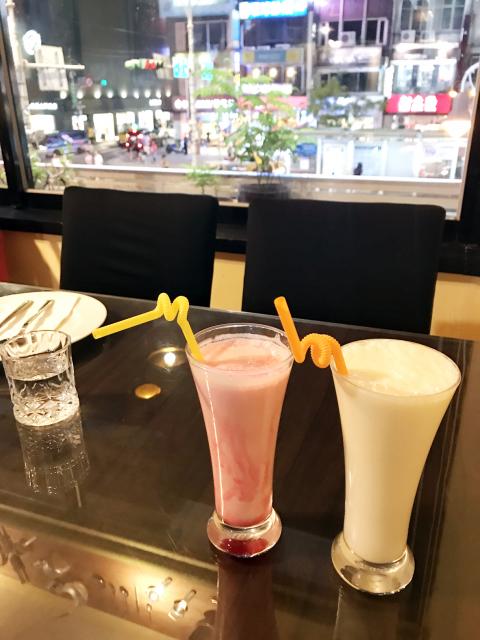
Photo: Liam Gibson
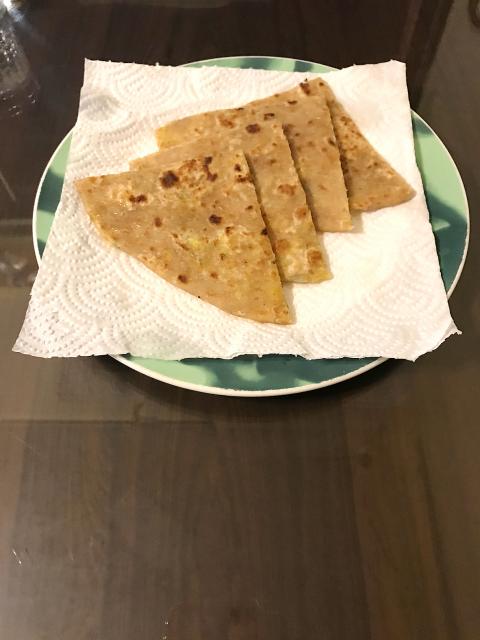
Photo: Liam Gibson

Aug. 25 to Aug. 31 Although Mr. Lin (林) had been married to his Japanese wife for a decade, their union was never legally recognized — and even their daughter was officially deemed illegitimate. During the first half of Japanese rule in Taiwan, only marriages between Japanese men and Taiwanese women were valid, unless the Taiwanese husband formally joined a Japanese household. In 1920, Lin took his frustrations directly to the Ministry of Home Affairs: “Since Japan took possession of Taiwan, we have obeyed the government’s directives and committed ourselves to breaking old Qing-era customs. Yet ... our marriages remain unrecognized,
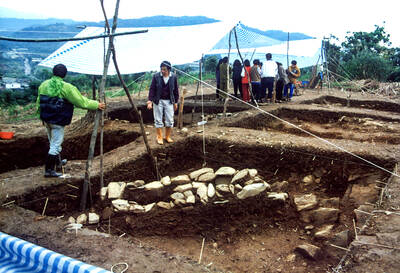
During the Metal Ages, prior to the arrival of the Dutch and Chinese, a great shift took place in indigenous material culture. Glass and agate beads, introduced after 400BC, completely replaced Taiwanese nephrite (jade) as the ornamental materials of choice, anthropologist Liu Jiun-Yu (劉俊昱) of the University of Washington wrote in a 2023 article. He added of the island’s modern indigenous peoples: “They are the descendants of prehistoric Formosans but have no nephrite-using cultures.” Moderns squint at that dynamic era of trade and cultural change through the mutually supporting lenses of later settler-colonialism and imperial power, which treated the indigenous as

An attempt to promote friendship between Japan and countries in Africa has transformed into a xenophobic row about migration after inaccurate media reports suggested the scheme would lead to a “flood of immigrants.” The controversy erupted after the Japan International Cooperation Agency, or JICA, said this month it had designated four Japanese cities as “Africa hometowns” for partner countries in Africa: Mozambique, Nigeria, Ghana and Tanzania. The program, announced at the end of an international conference on African development in Yokohama, will involve personnel exchanges and events to foster closer ties between the four regional Japanese cities — Imabari, Kisarazu, Sanjo and
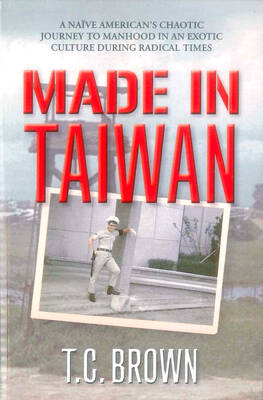
By 1971, heroin and opium use among US troops fighting in Vietnam had reached epidemic proportions, with 42 percent of American servicemen saying they’d tried opioids at least once and around 20 percent claiming some level of addiction, according to the US Department of Defense. Though heroin use by US troops has been little discussed in the context of Taiwan, these and other drugs — produced in part by rogue Chinese Nationalist Party (KMT) armies then in Thailand and Myanmar — also spread to US military bases on the island, where soldiers were often stoned or high. American military policeman